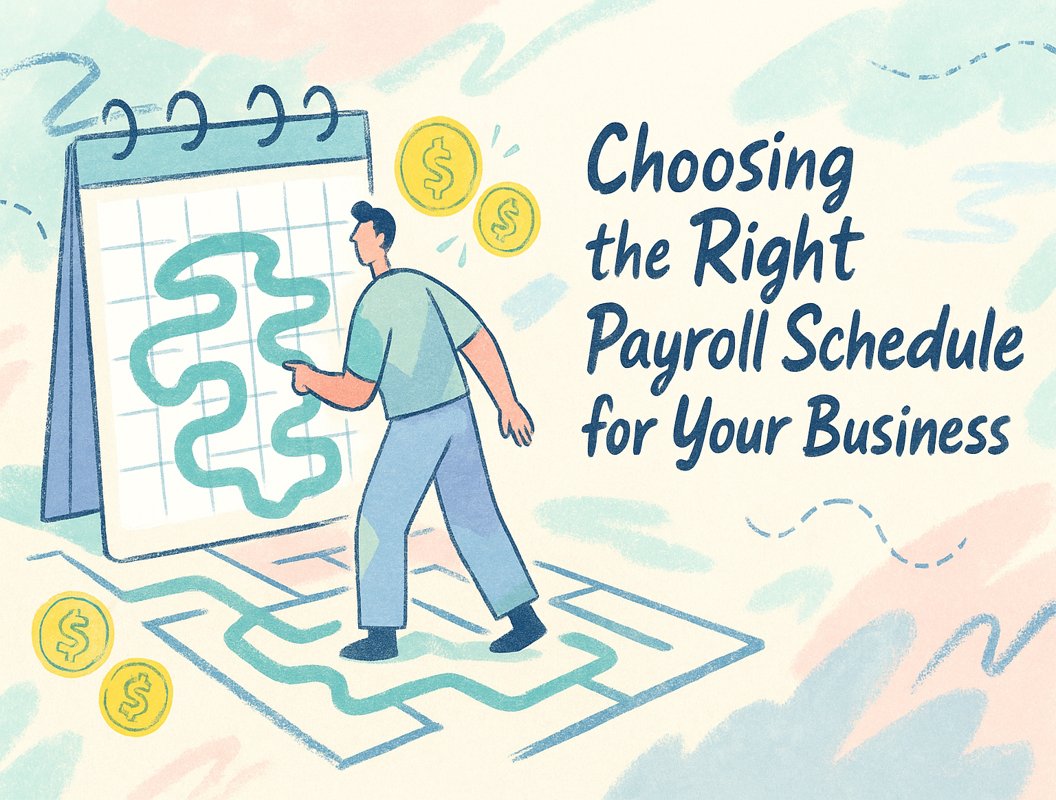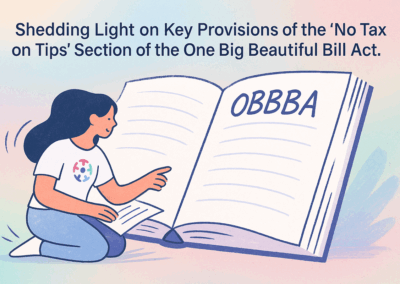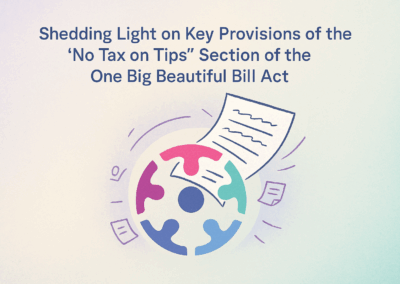One of the first operational decisions you’ll make as an employer is how often to pay your employees.
While it might seem like a straightforward administrative task, your payroll frequency has a major impact on your team’s satisfaction, your cash flow, and your compliance obligations.
There isn’t a one-size-fits-all answer. The ideal payroll schedule depends on your industry, workforce composition, internal capacity, and state laws.
Below, we’ll walk through the four main payroll frequencies, their pros and cons, and which types of businesses typically use them.
Key Considerations Before Choosing a Payroll Frequency
State Compliance
Many states have minimum pay frequency requirements for employees, especially for hourly workers. Some states mandate at least semi-monthly or bi-weekly pay.
📍Always check your state’s labor laws before finalizing your payroll schedule to ensure compliance.
Changing Payroll Schedules
Changing your payroll frequency is generally allowed as long as it’s done in good faith and with appropriate notice to employees. Changes must not be used to delay payment or reduce earned compensation.
📍Employers should communicate clearly and plan transitions carefully to avoid compliance or trust issues.
Different Schedules for Different Roles
It’s possible to pay salaried and hourly employees on different schedules. This is often done to simplify calculations—hourly employees benefit from weekly or bi-weekly payroll to track overtime easily, while salaried staff may be fine with semi-monthly or monthly schedules.
📍Your capacity to manage multiple schedules will depend on your internal processes or payroll software.
The Four Most Common Payroll Frequencies
- Weekly Payroll
- Overview: Employees are paid once a week, typically resulting in 52 pay periods per year.
- Common in: Construction, hospitality, manufacturing, and other hourly industries.
- Pros:
- Easy to calculate weekly overtime.
- Employees receive pay more frequently, improving satisfaction and budgeting.
- Cons:
- Increases administrative workload.
- May result in higher payroll processing costs.

2. Bi-Weekly Payroll
- Overview: Employees are paid every other week on the same day (e.g., every other Friday), totaling 26 pay periods per year.
- Common in: Healthcare, nonprofits, and mid-sized businesses.
- Pros:
- Balances employee needs with back-office efficiency.
- Fixed day of the week helps employees budget.
- Cons:
- Overtime must still be calculated weekly under federal law.
- Occasionally results in three pay periods in one month.
3. Semi-Monthly Payroll
- Overview: Employees are paid twice per month (typically on the 1st and 15th, or the 15th and 30th), totaling 24 pay periods annually.
- Common in: Finance, legal, tech, and corporate sectors.
- Pros:
- Aligns well with monthly benefit deductions and accounting cycles.
- Predictable dates for financial planning.
- Cons:
- Pay dates vary based on weekends/holidays.
- Difficult to manage overtime for hourly workers.
4. Monthly Payroll
- Overview: Employees are paid once per month, totaling 12 pay periods.
- Common in: Executive-level roles, finance, and commission-based positions.
- Pros:
- Minimizes administrative workload and processing costs.
- Easy alignment with financial reports.
- Cons:
- Least popular with employees, especially those living paycheck-to-paycheck.
- Not permitted for hourly staff in some states.
Balancing Employee Needs and Operational Efficiency
Choosing the right payroll frequency goes beyond logistics—it’s about supporting your team and aligning with industry expectations. For example, if your competitors offer weekly pay and you don’t, that could affect your ability to attract and retain talent.
Also consider:
-
Do you have time to run payroll weekly?
-
Can your software correctly handle overtime and tax reporting?
-
Do you need separate schedules by role?
Final Thoughts
Your payroll schedule is one of the most important decisions affecting both employee satisfaction and back-office efficiency. Be sure to evaluate:
- Legal requirements in your state
- Industry standards and employee expectations
- Your team’s ability to manage calculations, withholdings, and reporting
Choosing the right schedule—and sticking with it—helps build trust, improves retention, and ensures smoother operations. If payroll has become a pain point, it may also be a good time to evaluate whether your current systems or providers are still the right fit.
Need help deciding?
If you’re evaluating the right pay schedule for your workforce or reassessing your current payroll system or provider, we’re here to help.
📩 Contact us today — we’ll guide you through the process and ensure you make the best choice for your business and your team.





